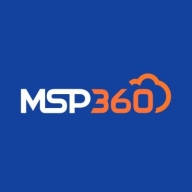

Teradata and MSP360 Backup compete in the data management and backup solutions market, respectively. Teradata has the edge in complex data environments due to its performance capabilities, whereas MSP360 excels in user-friendly backup solutions and integration with cloud services.
Features: Teradata offers massive parallel processing, scalability, and advanced analytics, catering to large-scale data warehousing needs. It boasts a robust performance and reliability for handling complex queries. MSP360 Backup, on the other hand, is recognized for its straightforward backup capabilities, wide compatibility with cloud storage services, and intuitive user interface, making it ideal for businesses seeking simple data protection solutions.
Room for Improvement: Teradata could improve its cost-effectiveness and enhance its handling of unstructured data, along with better integration capabilities with various platforms. Users also desire improved cloud services. MSP360 Backup needs to enhance its user interface to better accommodate both novice and expert users. It could also benefit from more robust backup analytics and improved graphical reporting features to support comprehensive data protection strategies.
Ease of Deployment and Customer Service: Teradata supports diverse deployment models, including on-premises, hybrid, and cloud, offering flexible solutions for extensive data warehousing requirements. However, some users note slow response times in technical support. MSP360 Backup provides ease of deployment in cloud environments, with its customer service being consistently praised for efficiency and responsiveness, making it a favorite in cloud integration and client satisfaction.
Pricing and ROI: Teradata is a premium-priced solution, often justifying costs with its comprehensive analytics and performance capabilities, providing substantial ROI. However, high costs pose a concern for smaller companies who seek more flexible pricing models. MSP360 Backup is celebrated for its cost-effectiveness, especially for small businesses, delivering solid value at a lower price point despite offering comprehensive features.
| Product | Market Share (%) |
|---|---|
| Teradata | 0.3% |
| MSP360 Backup | 0.7% |
| Other | 99.0% |


| Company Size | Count |
|---|---|
| Small Business | 11 |
| Midsize Enterprise | 2 |
| Large Enterprise | 2 |
| Company Size | Count |
|---|---|
| Small Business | 26 |
| Midsize Enterprise | 12 |
| Large Enterprise | 49 |
MSP360 Backup is a comprehensive data protection solution designed for businesses of all sizes. It offers a wide range of features and capabilities to ensure the safety and security of critical data.
With support for various storage destinations, including local drives, network shares, and cloud storage providers, MSP360 Backup provides flexibility and scalability. It also offers advanced scheduling options, allowing users to automate backups based on specific time intervals or events.
The solution supports both full and incremental backups, minimizing storage requirements and optimizing backup speed. MSP360 Backup also includes built-in encryption and compression, ensuring data privacy and reducing storage costs. Additionally, it offers easy file and folder recovery, allowing users to quickly restore lost or corrupted data.
With its intuitive user interface and robust set of features, MSP360 Backup is a reliable and efficient solution for businesses looking to protect their valuable data.
Teradata is a powerful tool for handling substantial data volumes with its parallel processing architecture, supporting both cloud and on-premise environments efficiently. It offers impressive capabilities for fast query processing, data integration, and real-time reporting, making it suitable for diverse industrial applications.
Known for its robust parallel processing capabilities, Teradata effectively manages large datasets and provides adaptable deployment across cloud and on-premise setups. It enhances performance and scalability with features like advanced query tuning, workload management, and strong security. Users appreciate its ease of use and automation features which support real-time data reporting. The optimizer and intelligent partitioning help improve query speed and efficiency, while multi-temperature data management optimizes data handling.
What are the key features of Teradata?In the finance, retail, and government sectors, Teradata is employed for data warehousing, business intelligence, and analytical processing. It handles vast datasets for activities like customer behavior modeling and enterprise data integration. Supporting efficient reporting and analytics, Teradata enhances data storage and processing, whether deployed on-premise or on cloud platforms.
We monitor all Backup and Recovery reviews to prevent fraudulent reviews and keep review quality high. We do not post reviews by company employees or direct competitors. We validate each review for authenticity via cross-reference with LinkedIn, and personal follow-up with the reviewer when necessary.